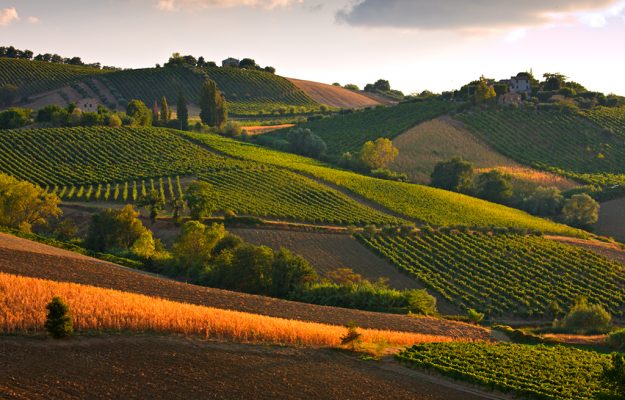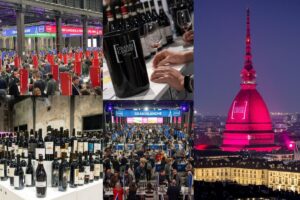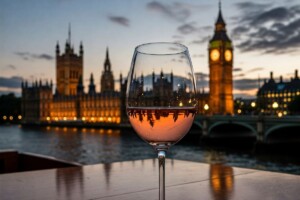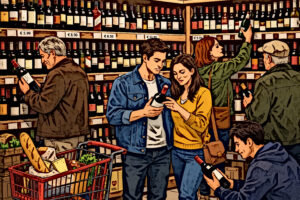Italy is full of unmissable wines and unique tourist attractions, but emerging is not easy: both compared to domestic and foreign competitors. And to do so, everywhere, producers need to team up, and then drive the promotion of the entire regional territory. Going beyond mere tasting as a wine tourism offer, and starting to look around, to tell the micro artisanal richness that characterizes so many territories in terms of quality and well-being; contaminating and fertilizing each other between different sectors and skills; investing time, money and training; creating synergy between public and private, between villages and agriculture, between thought and action; tuning in to the needs of the different guests interested and curious about the context in which they find themselves; and learning to welcome and tell with constancy and organization. Only in this way can wine gain value and in turn distribute value to the territory from which it comes. A discourse that applies to everyone, and even more so to the Marche region of wine, which was in the spotlight during the days of “The Magnificent 16” in Recanati, in the conference “Wine tourism: experiential and economic value for the development of the Marche region”, and which brought together for the first time the 16 Doc and Docg wines of the Istituto Marchigiano Tutela Vini in Recanati (Imt), to relaunch the only “plural” region in Italy as an essential destination for Italian wine tourism. Giving their views were the voices of institutions, research and business, such as Francesco Acquaroli, president of the Marche Region, Andrea Maria Antonini, councillor for Agriculture Marche Region, Mirco Carloni, president of the Agriculture Commission of the Chamber of Deputies and Giangiacomo Gallarati Scotti Bonaldi, president of Federdoc; Michele Bernetti, president Istituto Marchigiano di Tutela Vini and at the helm of Umani Ronchi; Marco Bruschini, director Atim - Agenzia per il Turismo e l'Internazionalizzazione delle Marche; Ludovico Scortichini, CEO Go World and international tour operator; Cristina Mottironi, professor at Sda Bocconi School of Management; and Valerio Temperini, of Università Politecnica delle Marche; and with contributions from WineNews director Alessandro Regoli. Starting with data, they come out with a very positive outlook: according to the World Tourism Organization we are catching up on international arrivals on 2019, then on pre-Covid: a 10% short of matching them. The Un World Tourism Organization, for its part, predicts a flow of 1.8 billion tourists, largely interested in Europe (62%) and Southern Europe (28%), so a decidedly important pie that the country’s economy could attract. In addition, tourism in the world has a very important value because it contributes more than 10% of GDP and is also the sector most consistent with socio-economic development according to sustainability indicators: this impact is not only attributable to the number of presences, but also involves the associated supply chains that create an induced income that is redistributed. This generic picture presented by Professor Valerio Temperini, is enriched by a more specific analysis: regarding the economic return, at the local level it is estimated that for every 100 euros spent on tourism, another 80-120 euros of added GDP value is generated: an important multiplier effect. After Covid, investments in this sector have also increased, and following the trends of the moment (rural tourism, nature, domestic, short vacations) at the system level could provide concrete and effective responses. The wine tourism segment in particular, according to Statista, was worth $9 billion the first year of the pandemic and is expected to triple by 2030, with Italy as the “top wine destination”. The people involved will not only be experts or enthusiasts, but also “casual wine tasters”. At the operational level, what needs to be invested in to attract this new interest? Looking at our benchmark (i.e., those in the market, according to Temperini, who show that they can do better than others and who therefore become our reference for action, which in our case are Tuscany and France), we realize that communication needs to be clear and easily usable, with very varied package or customizable proposals that touch at the same time on wellness, sports, art and local crafts. Marche has a very rich tangible heritage to offer (natural, historical-architectural, artistic and monumental), but it needs to work a lot, still on the intangible one, made of information, knowledge, skills, relationships, experiences, emotions, services that are able to create collaborations and integrations between different sectors (lucky Marche example, says Temperini again, the aging of wine - food and wine sector - in the Frasassi caves - nature sector, or cooking classes, which not only involve tourists in local traditions, but also promote typical products). “The path to take, then, is quite simple in words: analyze the market and identify target segments; map the area’s resources; create integrated tourism experiences of value for the identified target segments; communicate the value propositions clearly and distinctively compared to competitors; transfer the value of the experience; measure the results and, if necessary, adjust the focus. Above all, because wine tourism is worth it”, Temperini concludes, “it has a higher spending capacity; it is a deseasonalized tourism that can bring wealth throughout the year; it is an international tourism, on which we can still grow; and finally, it is accompanied by the so-called “food souvenir”, which helps tourists remember the experience even when they return home, involving and enticing those who have not yet done so to leave”. But what does it mean to apply tourism capacity to wine? Both agriculture and tourism are based on the strong product-territory combination, so there is a structural synergy between the two sectors. “As early as the 1990s, a start was made to connect them, to try to overcome the methanol scandal and bring people back to wine. Today, however”, explains Professor Cristina Mottironi, “they are intertwined again to make the supply chain more competitive and respond to a new demand, to which we must give attention because it drives choices. In the bulimia of data available today on the subject, one in particular seems to be shared: people who move driven primarily by food and wine motivations touch 25 million, when 10 years ago it was just 5”. It is a much more cross-cutting tourism that adds to beach, cultural, sports and all other existing forms of tourism interest. Interest in learning about a country's food and wine traditions is estimated to be around one-third of total tourism spending (30 billion for our country): an important item of expenditure in which we can leverage. And it is no longer just local tourism, but has become internationalized: in fact, the Bank of Italy estimates that spending on food and wine by foreigners is second only to spending devoted to art and culture experiences. If the most developed markets in Italy at the moment remain the United States, Germany, France and Great Britain (which generate more tourism and more spending but which at the same time - coincidentally - are also the countries to which we export the most), we must not stop dedicating ourselves also to those nations that seem more culturally distant to us, and which instead are taking an interest in us in this type of experience, such as China. When it comes to internationalization, the role of food and wine still has a lot of room, and tourism in general has a very important economic impact: "it is estimated that about 60% of tourists who visit wineries spend an average of more than 50 euros per visit, with an even larger impact on the territory estimated at a daily expenditure of 140 euros. Vacations that are often short, but with significant per capita spending. “These figures”, Mottironi points out, “are transformed for companies, particularly wine producers, into a contribution to turnover that is around 7% for larger companies, rises to 14% for smaller companies, and can touch 30% in the most vocated and developed territories. The value, however, also lies in the broader aspects: tourists have the opportunity to have a direct experience in the place of production, and this for us is an opportunity to transfer the identity values - of quality, sustainability, craftsmanship - that characterize our products”. Image-building experience impossible to do without the people on site. However, there is a need to be careful: tourists today are much more prepared, sophisticated and demanding. They do not want to have only one type of experience and denounce standardizations. Therefore, standardization and lowering the value of productions must be avoided. From this point of view, Marche has an advantage: there is already tourist attraction; there are initiatives that increase brand perception, which is therefore consolidating (although more as a whole, less on individual agri-food productions); there is a very useful supporting law that allows wineries to host and welcome; but above all, there is beginning to be a system logic that can drive. “In tourism, in fact, no one is right alone and it does not develop with the contribution of a single private actor or with the public actor alone: working together according to a supply chain logic and in synergy between public and private”, Mottironi continues, “is absolutely necessary to network all the experiences that punctuate the visitor experience”. Indeed, steps are needed that individual companies are not able to convincingly guarantee, starting with communication: it is useless to do if we do not let people know; moving on to the issue of product distribution and marketing: tourism in the Marche is still very seaside and local, with little presence in tourism distribution channels; we need to preside over the quality and sustainability of an area, and that is why wine and food tourism must remain the competence of the agricultural world; we need to think about cross-fertilization, because the moment we work together we enter the market with coherent and consistent offerings, creating value; finally, training is needed, because wine tourism means that those who produce food and wine must become competent in hospitality, services, commerce and experience creation, while those who welcome must become experts in the world of food and wine, knowing and promoting local productions. “We talk about the supply chain”, Mottironi concludes, “not only because the tourist has a 360-degree experience, but because we are able to activate system economies, which are fundamental for companies and the territory”. From this point of view, national and local politics seem to sound in unison with this need to team up, aware that wine is a business card that attracts to redistribute consideration to the whole territory, which thus becomes a protagonist in each and every experience. According to Francesco Acquaroli, president of the Marche Region, connected by video, “the Regional Law on Villages (29/2021) serves to breathe new life into the hinterland and its historic centers, which represent the most authentic identity of centuries of community life, where to rediscover the products of a millenary tradition: a heritage to be cultivated to revive tourism and the entire Marche region’s rich local economic network. There is a lot of work to be done, but it is work that needs enthusiasm and optimism: “The Magnificent 16” goes in this direction, because it leverages mutual involvement between the public and private sectors, without which every path risks losing its meaning or power”. Also in agreement is Andrea Maria Antonini, alderman for Agriculture Marche Region, according to whom companies must not stop at making their wines known, but must systematize these wines with the territory. Wine can, in fact, be the driving force behind a very rich narrative and set in motion a virtuous circle of promotion of the Marche region, where there is widespread craftsmanship in so many sectors: small businesses, small villages, so much biodiversity and so much quality. It is the representation of the small done well. “We don’t have metropolis, but we have countryside, small plots and not latifundia. We need to indulge the curiosity of tourists to fully experience the context that is hosting them. The Regional Law on Oenotourism (No. 28/2021) supports this direction”, comments Antonini, “and provides training and reception tools to increase the quality of the services offered: immediate and professional responses do indeed make a difference in terms of perceived quality”. Giangiacomo Gallarati Scotti Bonaldi, president of Federdoc, keeps abreast of the situation with regard to the Italian position in the European sphere as well. In his video intervention he remarked how much the Imt is a unique example in Italy of union between different denominations, “unfortunately not replicated in the rest of Italy, when it should instead be a widespread goal - certainly not easy - that would create a healthy competition with foreign countries and in Europe. Beyond the borders we in fact need to create a shared clear and transparent communication, which is obviously welcomed by the EU institutions, which lately seem a bit distracted. Wine tourism is a very strong driver that can give new energy to the sector and thus make it even stronger on the international market”. But if there is some difficulty in finding community solutions to wine protection and promotion, there is no shortage of challenges at the national level as well. Concerns voiced by Mirco Carloni, chairman of the Agriculture Commission of the Chamber of Deputies. “The March 12, 2019 Decree on wine tourism activity by then-Minister of Agriculture Centinaio and the Marche Regional Law on Enotourism 28/2021 framed wineries not only as producers, but also as wine administrators. There are definitely still regulatory imperfections to be resolved”, Carloni admits, “but the biggest risk is that the wine tourism activity will become distorted by losing its agricultural soul”. In fact, this opportunity is designed to develop wine tourism from the places of agricultural production, so that they also become places of tourist attraction. Wine tourism must not be a value in itself but add value to wine, so that the quality it contains and the effort it takes to obtain it is perceived: it is needed to tell the story of the richness that the agricultural act brings to the land. That is why it is also necessary to fight against the selling off of bottles and instead charge an appropriate price for them. But in addition to the risk of “drift”, there is also a practical problem: “we are at a delicate stage where we risk understanding things without then putting them into practice. We have a big logistical problem: there is a lack, for example, of tourist agencies that offer packages on Marche, because they are almost all directed toward travel abroad. Transforming a Region accustomed to proposing “outbound” packages into a Region that proposes “inbound” packages is very difficult”, Carloni concludes, “but it is necessary to set the machine in motion. From October, daily flights to and from Rome, Naples and Milan will probably be activated at Ancona airport: a huge opportunity for wine tourism and Marche cannot be found unprepared, without coordinated experiences to offer”. Exactly this is the work Marco Bruschini, director of Atim, Marche Tourism and Internationalization Agency since September 2022, is devoting himself to. According to him, Marche has to claim to play in Serie A, and therefore a strategic plan is needed to raise the bar of actual and perceived value. “The challenge is twofold: to get people talking about Marche, because abroad they still don’t know it exists (small provocation: so what was the use of the 100 million euros of public funds spent in the last 10 years on promotion?); and then to make a system, creating a goal, rowing in the same direction and moving compactly. This led us to launch the new Marche brand (“Let’s Marche”)”, Bruschini explains, “to induce active action that would “move Marche” and “move toward Marche. Marche has always shown that it does quality, but if no one has noticed until now something has been wrong at the strategic level”. The “I Magnifici 16” event is precisely part of this new strategic path of promotion that began at the Rome Horse Competition in Piazza di Siena, passing through “Gabicce diWine”, again organized in close collaboration with the Istituto Marchigiano Tutela Vini. A varied path and still in its infancy, which Ludovico Scortichini, ad Go World and international tour operator, assessed positively from the height of his many years of experience, because, “wine unites countries culturally, understood across the world. The moment we include wine within tourist packages”, Scortichini explains, “we inevitably include the territory, nature, culture, and sustainability in the itinerary. But only with wine it is impossible to do wine tourism, we absolutely have to tie it to where this wine is produced, how it is made, who thinks about it, who creates it, who sells it and who tells about it. However, storytelling has to start with what you have around you, in terms of quality and well-being. So investment is needed, creating a single system asset between public and private because that is the only way to increase spending capacity and coordination between producers, hoteliers, transporters, tour guides, tour operators. But above all, training is needed: those who tell must know what they are saying, but they must also know to whom they are telling it: get out of the logic of “I am the best” and enter the logic of “I am different”, which is what the consumer knows how to recognize”. In fact, a successful product often does not base its outcome on its (apparent) absolute best quality, but on its ability to tell a story that makes it unique and inimitable. Useful tips? Shape the storytelling around who is listening: you need to demonstrate sensitivity and attunement to the consumer in order to “catch”him or her and not peddle banal standardized schemes. Also personalize and diversify the proposals we make, make them so tailor-made that they become the personal story of our guest: a story that he will take home and tell in his country, becoming himself an ambassador of the territory. Of all these opportunities, listed risks and suggested proposals is Michele Bernetti, president of the Istituto Marchigiano di Tutela Vini, who reiterates how wine tourism is a (perhaps the most) important lever for promoting a territory. “Marche accounts for 2% of Italian wine production, produced by a myriad of medium and small companies. Super-millionaire investments are impossible: even if we increased our production by 30%, we would still be small”. So wine tourism becomes promotion of the territory through production. But what needs to be activated to set a value chain in motion? “We started talking about it again in the 1990s, with the start of the Wine Tourism Movement and the first edition of “Cantine Aperte” promoted by Donatela Cinelli Colombini. But today wine tourism can no longer be about tasting the glass and buying”, Bernetti concludes, “we need to set up a sort of “contamination” between us wine producers, first of all, and then with all the other activities in the area. Associating ourselves with the network of villages, artisanal businesses, gastronomic production and all that the territory can already offer” and that today unfortunately in practice still plays a mostly solo game, rather than a team game. “Wine tourism is now a parallel activity to agricultural tourism. An economic activity with different and particular rhythms, which must be planned in harmony and as a form of love, but also of circular economy, towards the territory that must promote itself more and more in a synergistic way - noted WineNews director, Alessandro Regoli, in a message - wine is not only the protagonist, but the “medium” to tell the world about the beauty of our territories, because of the links it has with their history, their culture and their nature, in a “cascading” communication of what are increasingly our assets: agriculture and tourism. Because the success of wine tourism in Italy is also due to the work of communication, which I undertook in 1993 when this phenomenon was born, and well before the birth of WineNews (in 2000). A phenomenon that would not be such without the decisive investments by the most “enlightened” Italian wineries that, by focusing on hospitality in the winery and in their territories, have won a bet. Today, those same wineries, thanks also to new communication tools, have created a new way of telling, “reading”, bringing to life and making Italian wine territories a virtuous business. The sector must not, in fact, let itself be “eaten” by “hit and run” tourism: the future of wine tourism lies in the care of the territories, the quality reception, the services that are offered, and in “experiences” to discover not only wine & food, but all the beauty of a place. Old-fashioned wine tourism, that of “visit plus tasting”, now has its hours counted”.
Copyright © 2000/2025
Contatti: info@winenews.it
Seguici anche su Twitter: @WineNewsIt
Seguici anche su Facebook: @winenewsit
Questo articolo è tratto dall'archivio di WineNews - Tutti i diritti riservati - Copyright © 2000/2025


























































































































































































